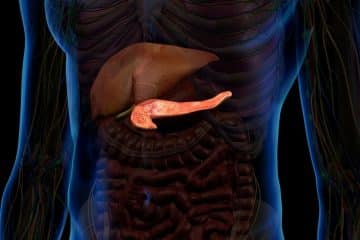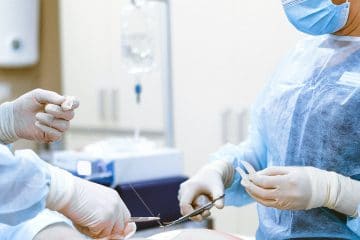What is an outpatient surgery
Outpatient surgery is a type of surgical therapy in which the patient is operated on and can go home on the same day. Overnight hospital stay is not required.
It is also known as ambulatory surgery, day or same-day surgery.
More and more surgical procedures take place in outpatient settings worldwide. What are the benefits of this practice? What type of surgeries are most commonly performed?
You will find answers to these questions below.
Some outpatient surgeries can even take place at physicians office settings. But most of them take place at hospital outpatient departments (HOPDs) or in independent ambulatory surgery centers (ASCs).
HOPDs are typically owned by and attached to Hospitals.
Most ASCs are independent but still affiliated with hospitals, so patients can be immediately admitted there if the necessity arises.
According to different sources there are around 5-7 thousand ASCs in the United States.
Benefits for patients
Ambulatory surgery has advantages for both patients and healthcare providers.
The biggest advantage is greater efficacy and better patient satisfaction, as long as outpatient surgery providers perform a narrower scope of procedures.
This allows more specialized and personalized care, than in inpatient hospital settings, where minor surgery candidates are treated amongst more seriously ill patients.
Less time spent in healthcare facilities not only lowers procedure costs, but also avoids problems associated with prolonged hospitalizations.
Since patients are not kept bedridden longer than is necessary, chances of hospital acquired infections and thromboembolism is lower.
In addition, there is no need to control medication doses or change the way of admission for chronically ill patients.
And finally, same-day surgeries offer more convenience and less stress to children and senior patients – time spent apart from their families is shorter and the rehabilitation process takes place at home.
Benefits for healthcare providers
Generally, in ASC and HOPD settings outpatient elective surgeries can be managed more efficiently, both in terms of finances and staff.
According to some studies average unit cost savings are between 10% and 70% compared to inpatient care.
Thus, in most cases it is beneficial to healthcare funders as well, that are already under pressure worldwide due to increasing the demand for medical care.
According to a review published in 2016, for the commercially insured population in the U.S., an estimated $37.8 billion is saved annually by using ASCs.
Another important factor is that the shortage of qualified doctors and nurses is less evident in day units like this, because they offer better working conditions with fixed hours and schedules.
Common outpatient surgeries
If we compare statistical data, we can observe 11% growth in the share of outpatient surgeries, from 54% in 1992 to 65% in 2012.
According to the report of Agency for Healthcare Research and Quality, in 2012 17.4 million day surgeries were performed. Here is the list of some common ambulatory surgeries:
Lens and cataract procedures – almost all invasive surgeries performed on eyes took place in outpatient settings (99%). Same is true for procedures performed on ears (92%), nose/mouth/pharynx (87%) and skin (76%)
Muscle and tendon therapeutic procedures – Tendon and muscle repairs, like rotator cuff repair procedures are day surgeries
Small joint repairs
Cholecystectomy – or gallbladder removal. In most cases is performed laparoscopically and thus in outpatient settings
Hernia repair – Same is true about abdominoplasty.
Therapeutic procedures on skin and breast
Lumpectomy – in ambulatory settings were performed about 97% of cases removal of a cancerous tumor and breast tissue around it.
Peripheral nerve treatment – Carpal tunnel syndrome is the best example
Nose/mouth/pharynx procedures – this includes adenoids, tonsillectomy and nasal polyps
On the other hand, some fields of surgery rely less on outpatient procedures.
Only 2% of obstetrical, 13% of cardiovascular and 28% respiratory surgeries were performed in AS settings.
Procedures before, during and after outpatient surgery
The essential part of all surgical procedures is patient evaluation. Individual risk factors are taken into account by the doctor to define whether or not outpatient setting is the best and safest option.
People with chronic hypertension, diabetes, pulmonary problems, etc may need additional visits with a doctor and anesthesiologist.
The requirements vary according to the type of surgery, but in general patients should not eat or drink before the procedure, give a full list of medications and carefully follow the instructions – some medications need to be discontinued prior the procedures, others not.
Patients should remove all kinds of jewelry, dentures, lenses, etc. Local, general, regional anesthesias or monitored anesthesia care can be used, according to procedure.
After the completion of the procedure, the patient is taken into the recovery room. It takes several hours to recover from anesthesia.
There are several criteria patients need to fulfill, before doctors discharge them. Stable vital signs, ability to walk unassisted and empty bladder are essential factors. Patients should also be able to eat and drink without nausea.
After that they are usually given written instructions for the postoperative period, including what to eat, medication schedule, whom to contact in case of problem, when to come back for evaluation, etc.
Patients should not drive and have someone to accompany them.
Take-home points
Ambulatory surgery allows a patient to return home on the same day. The best candidates for outpatient surgery are healthy people , who need minimally invasive procedures, but more and more complex procedures are moving to ASCs.
References:
https://www.ncbi.nlm.nih.gov/books/NBK20595/?report=reader
https://www.ascassociation.org/asca/communities/community-home/librarydocuments/viewdocument?DocumentKey=61197e80-d852-4004-860a-2424968b005b
Lemos P, Jarrett P, Philip B, eds. (2006). Day surgery: development and practice (PDF). London: International Association for Ambulatory Surgery. ISBN 9892002342. Retrieved 2018-06-11.
Wier LM, Steiner CA, Owens PL (Feb 2015). “Surgeries in hospital-owned outpatient facilities, 2012” (PDF). HCUP Statistical Brief #188. Rockville, Maryland: Agency for Healthcare Research and Quality. Retrieved 2018-06-11.
https://www.ncbi.nlm.nih.gov/pmc/articles/PMC5548941/
See Also


